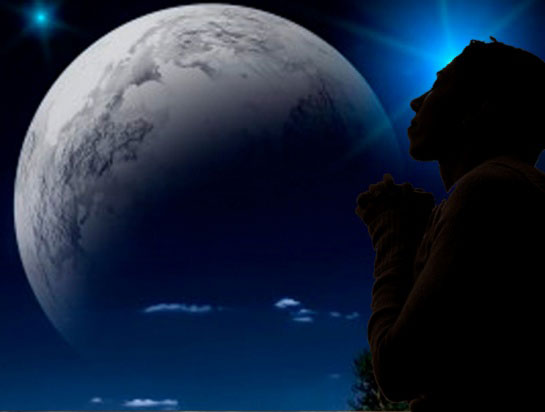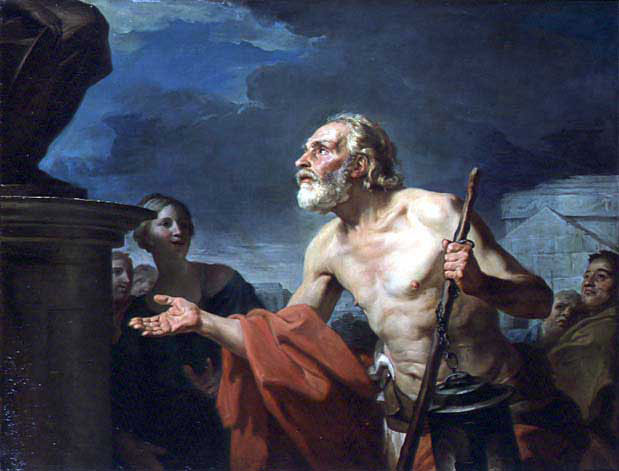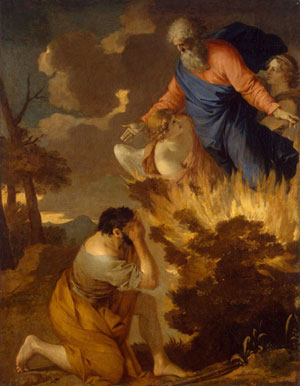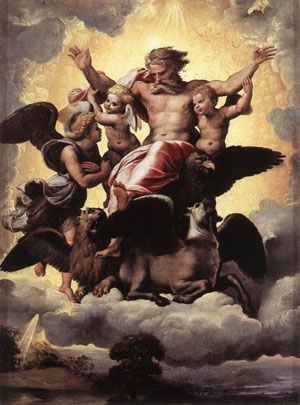We are pleased and honored to welcome as August Author of the Month Dr. Rita Louise. Her new book, Man Made – The Chronicles of our Extraterrestrial Gods, explores the convergence of elements between the ancient spiritual/religious worldview and that of the current worldview promoted by modern science. Her explorations of Myth are at the cutting edge of this promising new potential. Dr. Louise argues all mankind stands to benefit if the divisive differences between religion and science can be logically and reasonably resolved. Please join us in August to discuss these views and more on the AoM message Boards.
Mythology is the vehicle which carries stories of our past and delivers them into the present. Myth often recounts the chronicles of the Gods. Their tales were passed from generation to generation, through oral traditions, until they were finally carved into stone or written on cloth, skins, bark, paper or papyrus.
In the western world, stories of Gods such as Zeus, Osiris, Thor and Enki were once accepted as true recollections of our past. The rise of the Catholic Church caused our belief in these stories to decline. The Gods who once ruled the skies, the waters and the underworld were no longer viewed as supreme and almighty beings. They were transformed, from being omnipotent masters who ruled the skies and walked the earth, into unexplainable aspects of the natural world.
Some scholars contend the myths we have today (even in their most archaic form) are creations of a vivid imagination and the stories are simply flights of fantasy. Did our ancestors sit around a campfire conjuring up wild tales to describe the nature of lightning and other natural phenomena? Did they give these forces human characteristics including distinct personalities and well defined behaviors? Then, based upon what emerged, were these fantastic tales told and retold to a point that an entire religion and culture grew around them? Other stories, like ghost stories, were also told around the campfire in deep antiquity and never gained the same prominence as these supposed stories about nature.
There are also a number of researchers who conclude that the Gods were living breathing individuals in our remote past. Tales that described their exploits and achievements grew until they ultimately achieved God-like status. The Gods, we find in mythology, were not mortal men but immortal beings with lifetimes that extended far beyond our own. In the narratives we have inherited, they are portrayed as having amazing weapons capable of leveling mountains, smiting their enemies and putting fear into the hearts and minds of the other Gods! They are depicted as flying through the skies over incredible distances in their celestial chariots. And, instead of being a peaceful loving God like we imagine today, the Gods of myth were constantly fighting among themselves vying for ultimate power and control.
It is hard to imagine our ancestors creating these wild yarns.
When we look to legends based upon a historic individual we do not find the same kind of grandiose and god-like portrayal. In the legends of King Arthur and the Knights of the Roundtable, Arthur is not afforded supernatural skills. Stories surrounding King Arthur are filled with tales of brave knights and their noble deeds. Arthur is assisted in his journeys and plights by Merlin the magician who used spells and potions to assist his royal compatriot. Even in this rich mythological lore, we do not find tools and weapons that to this day confound the modern reader with their incredible powers and abilities.
What could our ancestors have drawn upon to come up with such magnificent and detailed accounts? What did they know of flying machines or "high tech" weapons? The flippant justifications mentioned earlier, that degrade our ancestor’s observational skills and integrity, do not explain one major point. Why would ancient chroniclers make up and memorize word-for-word such far-fetched and far reaching stories? And then, pass them down from generation to generation? These stories were never portrayed as a work of fiction. They were described as being true factual accounts of our past.
Is it possible the stories we have of the Gods are true? A number of factors support this possibility. First are the narratives of the myths themselves. When myths discussing the earliest periods of time, are laid out side-by-side, one remarkable fact immediately surfaces. There is an uncanny degree of commonality in the narratives when the legends from different cultures are compared.
Take the biblical account of Noah’s flood. Hans Schindler Bellamy in his 1936 book Moon, Myths and Men, estimates there are over 500 flood legends worldwide. Theoretically speaking, if the floods recorded by cultures ranging from North America to Australia were independent events, then the stories they tell by their very nature, would be inherently different. Flooding caused by a hurricane would naturally be experienced and described differently from a flood resulting from a tsunami. In turn, a disastrous and uncharacteristic rise in the level of the Nile during its annual rainy season should on all accounts be recorded in a very distinctive way, as well. Elements of the stories, including the people involved, the cause of the flood, the means of their survival, and the identification of those who lived through this tragedy, would each be different.

Interestingly, this is not what we find. In a nutshell myth recalls: There was a pious, virtuous or righteous man who is warned of an impending flood. He builds a boat, an ark, digs a canoe; climbs on a log, a reed or leaf; or climbs to the top of a tree, or mountain, to escape the rising waters. He survives this disaster with his wife, his sister or several other family members. In some stories, animals are taken onto the boat or climb to the top of the mountain. There are also several instances that relate how an animal, such as a bird, is released in order to assess whether dry land had appeared. This eerie parallel is not the only one we find when comparing myths. They are consistently found in the stories of our past to a point that seems statistically impossible.
Continuing on, using the flood narrative as an example, the only explanation that could account for the commonality of this myth is that cultures from around the world are ALL telling the same story. Could the flood have occurred in one geographical area and the survivors then spread out to repopulate the world? We know from the archeological record that Australia was populated roughly 60,000 years ago. This date would imply the flood would have had to occur prior to human habitation in that region. Did a flood occur somewhere on the earth some 60,000 years ago and the survivors then spread across the globe and shared their amazing brush with death? It is possible, although highly unlikely.
One thing to consider when evaluating these ancient texts is who wrote the story. One way to help determine the authorship of these stories is to look at the perspective through which the myth itself is told. Geraldine Woods, in her book AP Literature & Composition for Dummies states: "Literature provides a lens through which readers look at the world. Point of view is the way the author allows you to "see" and "hear" what’s going on." An author’s point of view can provide us insights into his psyche. It is the lens through which he views the world. Every author’s voice is unique. It sets the tone of the work. Each author uses a different vocabulary, a different set of values and different set of priorities as they relay their thoughts and ideas.
A soldier who survives a fierce battle in a war torn country would describe his experiences differently than someone at home who sees the carnage on television. The soldier might see his participation as part of a day’s work, while the observer might feel horrified, appalled or grief stricken at the events that are transpiring. Their thoughts, feelings and perspective of the event would be vastly different.
A quick survey into some of our mythic literature may provide some insights into the mindset of our ancestors. The Gods, depicted in the Hindu Vedas, for instance, were put on a pedestal. They are looked up to, prayed to and worshiped. In their time of need, our forefathers called upon the Gods for help and prayed for the God’s intervention into their daily lives. We find this same attitude of veneration towards the Gods in cultures around the world. An example can be seen in the Sumerian text A tigi of Enki for Ur-Ninurta.
Lord of complex divine powers,
Who establishes understanding,
Whose intentions are unfathomable,
Who knows everything! Enki,
Of broad wisdom,
August ruler of the Anuna,
Wise one who casts spells,
Who provides words,
Who attends to decisions,
Who clarifies verdicts,
Who dispenses advice from dawn to dusk!
Enki, lord of all true words,
I will praise you.
A similar glorification and reverence to the Gods can also be found in the New World where we find prayers such as the Prayer to Pachacamac.
O Pachacamac!
Thou who has existed from the beginning,
Thou who shall exist until the end,
powerful but merciful,
Who didst create man by saying,
"Let man be,"
Who defends us from evil,
and preserves our life and our health,
art Thou in the sky or upon the earth?
In the clouds or in the deeps?
Hear the voice of him who implores Thee,
and grant him his petitions.
Give us life everlasting,
preserve us, and accept this our sacrifice.
In each of these examples, man looks up to the Gods in prayer and admiration. Nary is an unkind word said about them. Interestingly, the author’s viewpoint towards the Gods, in both of these examples, is remarkably similar. They are also reminiscent of the prayers many of us would use to commune with God today.

In myths that focus on the exploits of man as the primary part of the narrative, we find a number of interesting characteristics. (For our purposes, we will identify these myths as "later myths" as opposed to "early myths". Early myths provide us with stories of our creation and the earliest times on the earth.) It is not uncommon to see inherent in these later myths a similar kind of physical and emotional separation between the Gods and man that we found in the narratives explored above. The Gods live in the heavens and man on the earth. In these later accounts, the Gods are portrayed as having a direct hand in human affairs. The Gods would pick a specific individual upon whom they would imbue "favors". The nature of these interactions, both good and bad, would determine whether an individual life was blessed or cursed. We find the intervention of the Gods into the lives of man consistently in Greek mythology. These stories often depict the Gods playing with the lives of man, where mankind seems more like pieces on a chess board being moved around and put into play by the Gods. When mankind does have some kind of interaction with the Gods, his attitude and position is submissive or filled with awe and wonder.
In the Old Testament of the Bible, God also interacts with specific well chosen individuals. Moses, in the book of Exodus is one of these individuals. God appeared to Moses the first time in the form of a burning bush. Moses’ mood and temperament is passive and obedient. When Moses reaches the summit of the mountain, he discovers that the burning bush was actually God and that he was standing in front of the God of Abraham, the God of Isaac and the God of Jacob. Moses feels unworthy to look upon his God and hides his face. God instructs Moses to take off his shoes because he is, in God’s words, standing on holy ground. Moses unquestioningly complies with God’s request. Then God asks Moses to go to the pharaoh and to bring his people out of Egypt. Moses replies "Who am I that I should go to Pharaoh". The attitude of Moses in this passage is always one of reverence, awe and submission towards the powers and ability of God. Worldwide, we find a similar stance with relation to the Gods, in the majority of the later myths.

This same kind of admiration towards the Gods is not found in early myths. The Babylonian creation myth, the Enûma Eliš, tells of the origin of the world, the early exploits of the Gods and the creation of man. It details the God’s elaborate and intricate plots, their ongoing violence as well as the scandals and conspiracies that took place in our prehistory. Their story, instead of being the loving kind creator as portrayed in the Bible, is one filled with tales of their savage wars, their cruelty towards each other and their ongoing rivalries.
Greek legend informs us that Uranus ruled the heavens during the earliest period in mythological history. Together with his wife Gaia they had a number of children, the Giants who are described as having 100 hands and 50 heads and the Cyclopes, the one eyed Titans. Uranus both hated and feared his offspring, so he locked them up in the depths of Tartarus, the underworld. Gaia became incensed to the ill treatment of her children and instigated a conspiracy to dethrone Uranus. Cronos, the youngest son of Uranus lead the rebellion. He was supplied with an adamantine sickle by Gaia to use against his father. Cronos, together with his Titan brothers, overthrew Uranus and in a final act, Cronos castrated him with the adamantine sickle his mother had provided.
The Norse Prose Eddas also contains stories of the early exploits of the Gods. We learn, based upon the narrative, that a truce was established between the Aesir (the Gods of War) and the Vanir (the Gods of Fertility) after a great war. Both groups, to seal their truce, spat into a vat. From their saliva Kvasir was born. Kvasir was a very wise man who traveled the world giving knowledge to humankind. One day he paid a visit to the dwarves Fjalar and his brother Galar. The dwarves killed Kvasir and poured his blood into two vats. They mixed his blood with honey, thus creating "mead". Anyone who drank the mead was endowed with wisdom and the power of poetry. The story goes on and we find that the giants, after a series of unfortunate and ill intended events, end up getting the mead as reparation from the dwarfs. Odin, the head of the Aesir pantheon, through an act of trickery, steals the mead from the giants; and takes it to share with the other Aesir Gods.
When read, the narrator of these epic tales does not interact with the Gods, but he is right there, part of the action. His point of view is not one of awe and wonder or even shock, terror or fear. It reflects an attitude of familiarity with the ongoing bad behaviors of the Gods. His viewpoint is not submissive or reverent, but more like he is part of the gang, so to speak. There is a level of acceptance to the God’s brutality like one we would expect to find if a member of a criminal gang were to write about his life on the streets. We find this same level of familiarity with the Gods in creation myths around the world.
In these early narratives, if mankind is mentioned at all, he is portrayed in a subservient role. Examples of this position come down to us in some of the early Sumerian writings. We (mankind) are referred to on these ancient stone tablets as the "black headed people". Unlike the Gods who share equal footing and bask in the limelight, the names of these "black headed people" are rarely mentioned. If they are, only the name of a specific individual responsible for a specific task is divulged.
Andrew Lang, in his book Myth, Ritual and Religion argues, "It may be argued that a belief in a Creator is itself a myth". It does not explain, according to Lang, the attitude of awe and moral obedience we feel in relationship to God in the first place. He goes on to question, why after having a belief in a Creator God did humanity go on to develop such wild and scandalous stories about him? In turn, why would we refer to ourselves (as seen in early myths) in such a derogatory and insignificant way?
Could it be that the myths and legends that tell of the earliest of time when the Gods walked the earth are actually the God’s stories about themselves? Was mankind spoken of insignificantly in these stories because that is how the Gods viewed him? Ancient writers seem to be telling us this may indeed be the case.
One final piece of evidence to support the divine authorship of our early myths is to examine what the Gods themselves had to say.
A Babylonian priest named Berosus lived during the reign of Alexander the Great. Much of Berosus’ work has been lost to the ravages of time. What little that does remain has been passed on to us through the writing of Alexander Polyhistor who quotes or paraphrases Berosus’s work within his own. According to Polyhistor, Berosus recounts that humanity was visited several times by an animal that came out of the Erythraean Sea. This animal was endowed with great reason. Its name was Oannes. Oannes, and those that followed him, are described as appearing like a large fish. This large fish had the face and feet of a man that protruded from beneath the fish’s head and tail. Accordingly, it was reported by Berosus, that the Oannes taught our ancestors about the generations of mankind. We find a similar tale in the Aztec culture of Mesoamerica. Legends tell of the feathered serpent God Quetzalcoatl. Quetzalcoatl was the God responsible for sharing our history, the history of the earth with humanity.
If, as myth says, our history was taught to us by the Gods themselves, then the dispersal of these related stories worldwide makes complete sense. The Gods could have shared their stories with the Babylonians, which would have included the story of the flood. They could have recounted these same tales to a totally unrelated group, like the Aztecs, the Maya or the aborigines of Australia. The history they shared with mankind would naturally contain the same stories, tone and tenor.

Myths from around the world consistently describe the earliest time on the earth. In recent years these fantastic stories of the Gods have been relegated to the forces of natures, aspects of our consciousness or the wild imagination of our ancestors. If the stories of the Gods were created by man, then the narrative we find would inherently be different. If, on the other hand, the stories of our ancient past were authored by the Gods, then the uncanny commonalities we find stands to reason. There would only be one story to tell. Not our stories about the Gods, but the Gods stories about themselves.
© Copyright Body, Mind & SoulHealer – soulhealer.com 2013. All rights reserved.
Endnotes
- Berens, E. M. Myths and Legends Of Ancient Greece And Rome. New York: Maynard, Merrill, & Co.
- Black, J.A., Cunningham, G., Ebeling, J., Flückiger-Hawker, E., Robson, E., Taylor, J., and Zólyomi, G. "A tigi to Enki for Ur-Ninurta (Ur-Ninurta B)." The Electronic Text Corpus of Sumerian Literature. 1998-2006. http://etcsl.orinst.ox.ac.uk/ (accessed October 17, 2009).
- Kilian, Crawford. "Advice on Novel Writing." Darkwaves. November 05, 1992. http://www.darkwaves.com/sfch/writing/ckilian/ (accessed 12 02, 2012).
- Kluz, Carol. "Narrative Voice." Artistic Network. June 03, 2005. http://www.artisticnetwork.net/arts/249/narrative_voice.html (accessed December 01, 2012).
- Lang, Andrew. Myth, Ritual and Religion. London: Longmans, Green and Co., 1913.
- Louise, Rita, and Wayne Laliberte. Man-Made: The Chronicles Of Our Extraterrestrial Gods. Dallas: SoulHealer Press, 2012.
- Means, Philip Ainsworth. Ancient Civilizations of the Andes . New York: Charles Scribner’s Sons, 1931.
- Smith, George. Chaldean Account of Genesis. London: Thomas Scott, 1876.
- Smith, Nicole. "Character and Divine Influence in The Iliad and The Aeneid : The Role of the Gods and Goddesses and the Direction of Fate." http://www.articlemyriad.com/. 2012. http://www.articlemyriad.com/character-divine-influence-iliad-aeneid-role-gods-fate/ (accessed November 28, 2012).
- Woods, Geraldine. AP English Literature & Composition For Dummies. Hoboken, NJ: Wiley Publishing, Inc., 2008.
Biography
Bestselling author and Medical Intuitive, Dr. Rita Louise is the host of Just Energy Radio and and the Founder of the Institute Of Applied Energetics. She is the author of four books including: Man-Made: The Chronicles Of Our Extraterrestrial Gods, Avoiding The Cosmic 2X4, Dark Angels: An Insider’s Guide To Ghosts, Spirits & Attached Entities and The Power Within, as well as hundreds of articles that have been published worldwide. She has appeared on radio and television and has spoken at conferences covering topics such as health and healing, ghosts, intuition, ancient mysteries and the paranormal. For more information visit soulhealer.com or listen to Dr. Rita live at justenergyradio.com.









